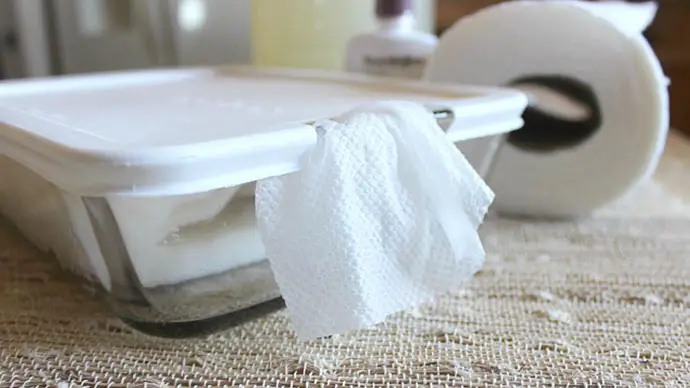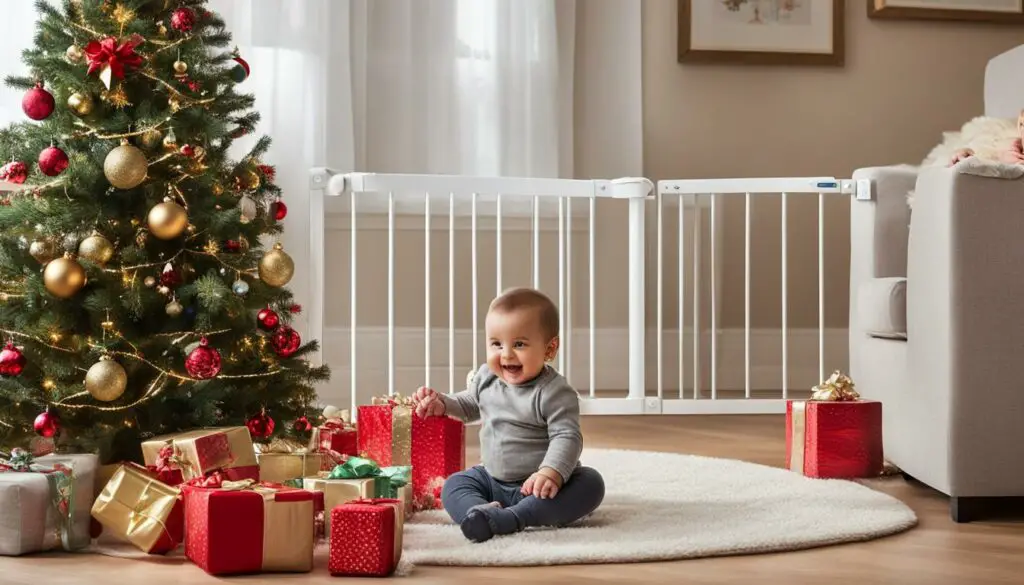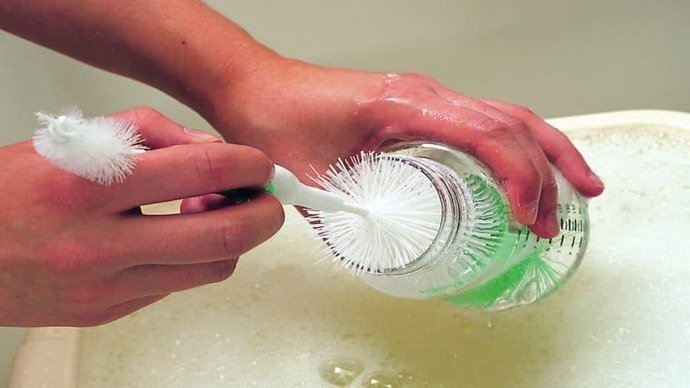As a parent, the safety of your little one is a top priority in every part of your home, including the bathroom. The bathroom presents unique hazards for babies and toddlers, from small objects that can be choking hazards to electrical outlets that pose electrical risks.
To ensure your child’s safety, it’s important to understand the potential dangers and take the necessary baby proofing measures. In this article, we’ll provide you with practical tips and tricks to help you baby proof your bathroom and prevent accidents.

Key Takeaways:
- Baby proofing your bathroom is crucial to ensure the safety of your little one.
- Common bathroom hazards for babies and toddlers include small objects, electrical outlets, and chemicals.
- Effective baby proofing measures include using non-slip mats in the bathtub, toilet locks, and securing hazardous items out of reach.
- It’s essential to perform a comprehensive safety check and make a checklist of baby proofing measures in your bathroom to ensure maximum protection for your child.
Common Hazards in the Bathroom for a Crawling Baby
As a parent, it’s important to be aware of the potential hazards in your home, especially in the bathroom where accidents can happen. When it comes to baby proofing your bathroom, it’s crucial to take precautions to ensure your little one’s safety. Here are some common hazards to watch out for:
| Hazard | Prevention |
|---|---|
| Choking hazards | Keep small objects out of reach and away from your baby. |
| Electrical outlets and cords | Use outlet covers to block electrical outlets, and keep cords high and out of reach. |
Choking hazards can be found in many places in the bathroom, including toiletries, cosmetics, and cleaning supplies. It’s important to keep these items out of reach and away from your curious baby. Electrical outlets and cords also pose a risk, especially if your baby enjoys pulling things or putting them in their mouth.
By taking simple precautions, you can prevent accidents from happening in the bathroom. Here are some tips to baby proof your bathroom:
- Install outlet covers on all electrical outlets.
- Keep cords high and out of reach.
- Store small objects, toiletries, cosmetics, and cleaning supplies out of reach.
- Use non-slip mats in the bathtub and shower.
By following these guidelines, you can create a safer environment for your baby in the bathroom. Remember, it’s better to be safe than sorry when it comes to your little one’s well-being.
Baby Proofing the Bathtub
As one of the most important places to keep your baby safe in the bathroom, the bathtub requires some extra precautions. Here are some steps you can take:
- Use non-slip mats: Place non-slip mats or decals on the bottom of the tub to prevent your baby from slipping or sliding around.
- Adjust water temperature: Make sure the water temperature is safe for your baby by testing it with your elbow before placing your baby in the tub.
- Use a bath seat: Consider getting a baby bath seat to provide extra support and prevent your baby from slipping or falling.
- Never leave your baby unattended: It’s important to stay with your baby at all times during bath time to prevent any accidents.
By taking these precautions, you can help ensure that bath time is a safe and enjoyable experience for you and your baby.
Baby Proofing the Toilet
The toilet can pose several risks to a crawling baby. From drowning hazards to harmful substances, it’s essential to take measures to baby proof this area in your bathroom.
One way to prevent accidents is by using a toilet lock that keeps the lid closed and prevents your little one from reaching inside. Also, make sure to keep the toilet paper out of reach and ensure that the electrical outlet near the toilet is covered with a safety plug. You can also consider placing a non-slip mat around the toilet area to prevent slips and falls.
In addition, it’s crucial to ensure that all harmful substances, such as cleaning supplies and chemicals, are kept in a secure cabinet or storage area that is out of reach of your baby. Always remember to close the cabinet doors tightly after use.
By taking these precautions, you can keep your baby safe and prevent accidents in the bathroom.
Baby Proofing the Sink and Medicine Cabinet
The bathroom sink and medicine cabinet can be hazardous areas for your crawling baby. As babies are curious and love to explore their surroundings, they may get their hands on things they shouldn’t. Here are some tips to help you baby proof these areas and keep your little one safe:
Bathroom Sink
One of the first things you can do to baby proof your bathroom sink area is to install a cabinet lock. This will prevent your baby from opening the cabinet and accessing cleaning supplies or other hazardous items. It is also important to keep sharp objects, like razors, out of reach. Consider moving them to a higher shelf or drawer.
Another way to ensure your baby’s safety around the sink is to install a faucet cover. This will prevent your child from hitting their head on the faucet while playing in the sink.
Medicine Cabinet
To baby proof your medicine cabinet, consider using a cabinet lock or moving hazardous items to a higher shelf. It’s important to keep medications, vitamins, and supplements out of reach as they can be toxic if ingested by your baby.
Make sure you also keep any sharp objects, such as scissors or nail clippers, out of reach. These items pose a potential risk to your baby if they manage to get a hold of them.
By taking these precautions and baby proofing your bathroom sink and medicine cabinet, you can ensure your baby’s safety in these potentially hazardous areas.
Baby Proofing Chemicals, Cleaning Supplies, and Sharp Objects
The bathroom is home to a variety of hazardous materials that must be kept out of reach of your curious little crawler. These may include hazardous chemicals, cleaning supplies, and sharp objects that could cause injury or harm. Here are some tips to keep your baby safe from these potential dangers:
Bathroom Chemicals
Common bathroom chemicals such as bleach, ammonia, and drain cleaners can cause serious harm to your baby if ingested or inhaled. Be sure to:
- Keep all chemicals in their original containers and out of reach of your baby.
- Store chemicals in a locked cabinet that your baby cannot reach.
- Dispose of chemicals properly and immediately after use.
Cleaning Supplies
Cleaning supplies, such as sponges and scrubbers, can pose a choking hazard to your baby. Be sure to:
- Keep all cleaning supplies in a locked cabinet that is out of reach of your baby.
- Dispose of used cleaning supplies properly and immediately after use.
- Wash all surfaces that come into contact with cleaning supplies thoroughly before allowing your baby to touch them.
Sharp Objects
Sharp objects such as razors, scissors, and tweezers should be kept out of reach of your baby to prevent injury or harm. Be sure to:
- Keep all sharp objects in a locked cabinet that is out of reach of your baby.
- Dispose of used sharp objects properly and immediately after use.
- Never leave sharp objects on countertops or in drawers where your baby can reach them.
By taking these precautions and ensuring that hazardous materials are safely stored and out of reach of your baby, you can create a safe and secure environment in your bathroom.
Additional Tips and Tricks for Bathroom Baby Proofing
When it comes to baby proofing your bathroom, there are many safety measures you can take to ensure that your little one stays safe from potential hazards. Here are some additional tips and tricks to help you create a safe bathroom environment for your baby:
- Use outlet covers: Electrical outlets can pose a serious hazard to your baby, especially if they are easily accessible. Use outlet covers to prevent your baby from sticking their fingers or anything else into the outlets.
- Keep cords out of reach: Cords from appliances such as hair dryers and electric razors can be a choking hazard or pose an electrical risk. Keep cords out of your baby’s reach and unplugged when not in use.
- Secure the shower curtain: A shower curtain with metal rings can be a hazard if your baby pulls on it. Use a plastic curtain with no metal rings or secure the rings to the rod with zip ties.
- Check your water temperature: Before placing your baby in the bathtub, check the water temperature to make sure it’s not too hot. Use a bath thermometer or test the water with your elbow or wrist.
- Use non-slip mats: Prevent slips and falls in the bathtub or shower by using non-slip mats on the floor.
- Install cabinet locks: Keep hazardous items such as cleaning supplies and medications out of your baby’s reach by installing cabinet locks on all cabinets and drawers in the bathroom.
- Keep the toilet lid closed: A toilet can be a drowning hazard for babies and young children. Keep the toilet lid closed and consider using a toilet lock to prevent your baby from accidentally falling in.
- Store sharp objects safely: Keep sharp objects such as razors and scissors out of your baby’s reach, either by storing them in a locked cabinet or by placing them high up on a shelf.
- Create a checklist: Make a checklist of all the safety measures you’ve taken in the bathroom to ensure that you haven’t missed anything important.
By following these tips and tricks, you can create a safe and secure bathroom environment for your little one. Remember to be vigilant and keep an eye on your baby at all times when they are in the bathroom.
Baby Proofing Your Bathroom for a Safe Home Space
As a parent, ensuring your child’s safety is a top priority, especially in spaces like the bathroom where accidents can happen. By properly baby proofing your bathroom, you can help prevent potential hazards and provide a safer environment for your little one. Here are some tips to consider:
Common Hazards in the Bathroom for a Crawling Baby
Small objects, electrical outlets, cords, and even the toilet can be potential hazards for a crawling baby in the bathroom. Be sure to keep these items out of reach and secure electrical outlets with outlet covers if necessary.
Baby Proofing the Bathtub
When it comes to bath time, consider using non-slip mats on the floor and adjusting the water temperature to prevent potential burns. Also, never leave your baby unattended in the tub and be sure to drain it immediately after use.
Baby Proofing the Toilet
Toilets can pose a danger to small children, especially those who are fascinated by the flushing mechanism. Consider using a toilet lock and always keep the toilet lid closed to prevent accidents.
Baby Proofing the Sink and Medicine Cabinet
Install cabinet locks on all cabinets and drawers containing hazardous items, such as cleaning supplies and medications. Store these items out of reach and consider using child-resistant caps on all medication containers.
Baby Proofing Chemicals, Cleaning Supplies, and Sharp Objects
Place cleaning supplies and chemicals in locked cabinets out of reach of your child. Additionally, store sharp objects, such as razors and scissors, in a secure location.
Additional Tips and Tricks for Bathroom Baby Proofing
Other tips to consider include keeping cords out of reach, securing loose rugs or mats, and using door stops to prevent fingers from being pinched in doors. Creating a checklist of baby proofing measures can also be helpful.
Conclusion
When it comes to baby proofing your bathroom, it’s important to be mindful of potential hazards and take the necessary precautions to ensure your child’s safety. By implementing these tips and tricks, you can create a safer home space for your little one.




